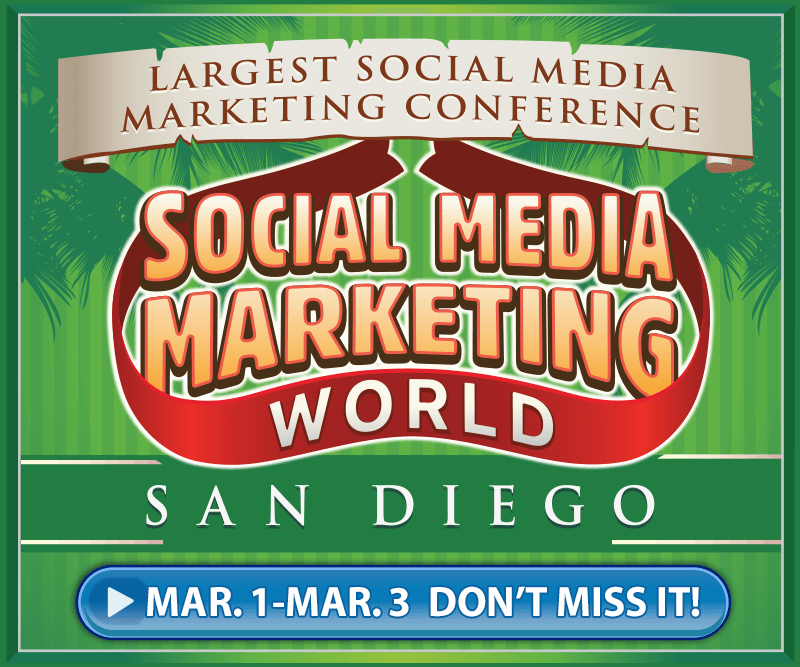Want to improve the return on investment (ROI) of your social media marketing? Are you measuring the right things?
To explore everything you need to know about measuring ROI, I interview Christopher Penn on the Social Media Marketing Podcast.
Christopher is the chief data scientist at Trust Insights. He also hosts the In-Ear Insights podcast. His latest book is AI For Marketers.
Christopher explains how ROI differs from return on ad spend (ROAS) and shares how to calculate ROI properly.
Listen to the Podcast Now
This article is sourced from the Social Media Marketing Podcast, a top marketing podcast. Listen or subscribe below.
Where to subscribe: Apple Podcast | Android | Google Podcasts | Google Play | Stitcher | TuneIn | Spotify | RSS
Scroll to the end of the article for links to important resources mentioned in this episode.
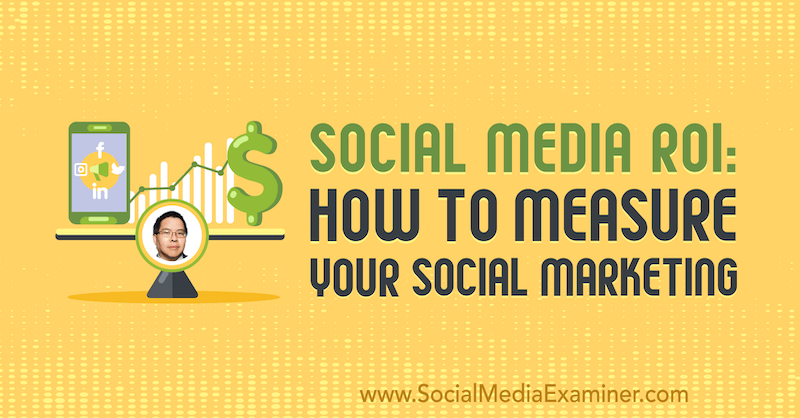
What Is Marketing ROI and Why Is It Difficult to Track?
A lot of people—especially executives—tend to use ROI as a catchall term for “results,” which is inaccurate. ROI is a financial mathematical equation: the money you earn, minus what you spent to earn that money, divided by how much you spent. In the U.S., it’s expressed in dollars, and the outcome is typically a percentage. If you spent $5,000 and you earned $10,000, your ROI is 50%. For every dollar you put in the machine, $1.50 came out.
ROI is hard for marketers to understand and track for several reasons. First, marketers don’t do a great job of understanding what they’ve spent. And second, marketers don’t do a great job of understanding what they earned and how their work helped a company earn money.
The calculation sounds simple but it gets muddied when you think about what goes into all of the parts of that equation.
What Does the Spent Component Encompass?
When marketers think about social media marketing, they tend to think about the direct dollar spend: Facebook ads, Google ads, Twitter ads, Instagram ads, and so forth. But what else goes into marketing?
Spend is a really tangled web: internet access, hosting costs, software costs, a website, an office, electricity, employees—all of these things go into spend. Every minute that an employee is doing something on social media is an opportunity cost because that employee could be doing something else.
Ask someone from the finance department about what marketing spends, and then of that, what social media spends for those hard- and soft-dollar costs. That’s half of the picture and that part alone takes some research to untangle.
What Does the Earned Component Encompass?
What did marketing earn? This is where everything goes off the rails for most marketers. Many marketers don’t know how much revenue they helped earn for the company due to a lack of understanding, a lack of data, and a lack of information about proper attribution.
If you don’t know what you earned and you don’t know what you spent, you can’t calculate ROI. Instead, marketers tend to default to something much simpler like return on ad spend (ROAS), which is a different formula entirely. People tend to conflate ROI and ROAS. Likewise, when executives ask about the ROI on their marketing, they’re often just looking for how many leads were generated. That’s not ROI; that’s results.
ROI Requires a Monetary Goal
ROI matters when you’re in a stable business environment. You’re not necessarily aiming for growth and you’re not trying to do anything crazy. Efficiency is the most important thing. You may have limited resources and you want to know where you can get the biggest bang for your buck.
ROI is always a comparative metric. To say that the ROI of a Facebook ad is 42% with nothing to compare it to means nothing. It always has to be accompanied by something else or compared to something else. When you compare across channels, for example, say your ROI on Facebook is 25% and the ROI of Google ads is 44%; if the focus is on efficiency, logically you should be doing Google ads, not Facebook ads.
There are also times when ROI simply doesn’t apply. To illustrate, right now, political campaigns are ramping up ahead of the U.S. elections in November 2020. There is no ROI of an election—you’re either elected or you’re not. There’s no financial outcome so there’s no “earned.” You would have to use other metrics to gauge the effectiveness of what you’re doing.
Another example would be if you’re a non-profit, and you care most about community engagement. ROI doesn’t apply because that outcome isn’t measured in dollars.
You have to be clear about what your goals are and how you’re going to measure those goals. And if those goals aren’t expressed in a monetary amount, ROI doesn’t apply.
Making Sense of the Data to Calculate ROI
Marketers have more access to data than ever before. But saying we’re in an age of data is like saying we’re in an age of ingredients. If you don’t know how to cook, then the ingredients don’t matter.
Cooking comes down to three things: ingredients, equipment, and knowledge. If you’re missing any one of those things, you’re out of luck. The same is true with marketing data. You need the data, you need the tools, and you need to know how to bring those things together successfully.
Tracking Paid Social Media vs. Organic Social Media
When we say “social media,” and particularly “organic social media,” we have to broaden our definition of what constitutes a social network. A lot of people instinctively think of the big, obvious social networks like Facebook, Instagram, Twitter, and YouTube. But think about what social media is.
By definition, any social network has value because of the network effect. If you write a blog, it has intrinsic value and that blog would be there whether five people read it or five million people read it. Obviously, there’s more business value to you if 5 million people read it but it would still be there.
A social network, by the network effect, is only valuable when used with other people. It’s like owning a telephone. If you’re the only person who has a phone, it’s useless. Once two people have a phone, you can call each other. And the more people who get phones, the more valuable your phone becomes. That’s a network effect. Social media is the same way. The more people who join a social network of any kind, the more valuable it becomes because people are the product and the value.
So what is a social network? Yes, Facebook and YouTube, but think about other places where you have those types of interactions. If you’re a programmer, GitHub is a social network where you can exchange code and ideas with other people. Slack is one of the biggest social networks in the world. Every Slack instance is different but it’s a social network. A Slack channel with one person in it is boring.
These are all places where you can create, interact, engage, share, like, and comment. These behaviors are social networks.
If we broaden our minds to what our definition of a social network is, then suddenly organic social media starts to look like referral traffic instead of social. It becomes part of our attribution equation again. When you share something on a social platform and people engage with it or share it or click on it, then that can be measured.

In many cases, these niche social networks don’t integrate with analytics of any kind. They may not even have analytics, nor do they have any interest in providing them. If you’re a marketer trying to figure out the social network for your niche or vertical, you have to get really good at things like UTM tracking for Google Analytics. If you don’t, you’ll have no idea what’s driving specific traffic to your website or properties.
When you see “direct traffic” in Google Analytics, substitute the words “don’t know” because there’s no attribution data. When a URL is shared in a Slack channel and someone clicks on it, there are no tracking codes because Slack doesn’t append any. So when that visitor goes to your website, the source is direct and the medium is none.
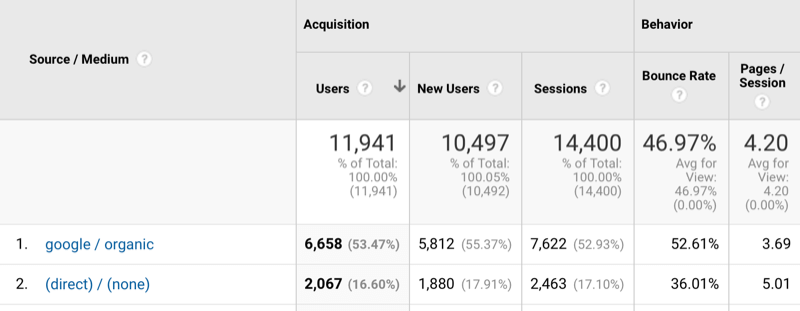
As a marketer, you have no idea if what you’re doing in the Slack channels where you’re engaging is actually working. The only way to find out is if users become customers and you ask how they found out about you.
Return on Ad Spend Doesn’t Equate to ROI
So many times, we take a look at our UTM parameters for the ads that we’re spending on. We’ll see how much the ad cost us to run and how much revenue it generated, and that’s all we look at. But that’s not the entire equation. If we’re truly looking at ROI, we’re skipping a lot of information there.
We’re measuring our ad spend and what revenue we’ve generated from our ad spend; that’s ROAS. That’s not a bad thing to do because it’s a very simple equation that allows you to understand how your ads are performing. ROAS is simply your earned divided by your spent; it’s a very different equation from ROI. And when we ignore the cost of the agency or employee we’re working with, we might actually be losing money.
That’s one of the greatest dangers of ROAS: people conflate it with ROI. ROI takes into account the cost of earning the money, whereas ROAS doesn’t factor any of that in. That’s one of the reasons why the ROAS numbers may seem astronomically high. The generally accepted best practice is that your ROAS should never go below 400%: For every $1 you put into an ad, you should get $4 back.
Determining Overhead Costs
Most larger organizations have a sense of the administrative overhead costs of an employee (salary and other overhead), which is something you can then amortize out. You know that employee’s salary and then you have the overhead costs.
To visualize this, in the United States, your cost for healthcare is going to be up to 25% or 30% of that employee’s salary costs. Add salary and overhead together, divide it by 2,080 (40 hours a week for 52 weeks a year), and you’ve got the employee’s effective hourly rate. However, many hours they spend on social media times that effective rate is what you’re spending in time as money.
Resource opportunity costs on social media go into your costs as well. Labor tends to be the most overlooked cost and it’s certainly the largest one because people don’t think about opportunity costs, they only think about hard-dollar spend.
If you do ROI correctly, you may realize you should just be hiring an agency or contractor to do social media for you. Your ROI may indicate that you’re either not that good at it or that it’s a much higher opportunity cost to try to grow that capability than just to outsource it.
The general rule of thumb Christopher gives to clients is that if it’s not part of their core business and there’s a high opportunity cost, they should spend the hard dollar. So they get the soft dollars back and they get their people back to focusing on what they’re supposed to be doing, which is the product or service.
Attribution Models for Earned Social Media
A big part of the “earned” piece of the ROI equation is attribution. How much did social media impact conversions? Standard Google Analytics has five attributions built in: first touch, last touch, linear, time decay, and model-based or position-based. Most of those aren’t useful most of the time because they offer a very limited view of the customer.
Think about what a customer journey looks like when considering a purchasing decision. They talk to friends, they do some research, and they read reviews. Maybe they read past blog posts, check out social media feeds, watch videos on YouTube, or ask questions in a Facebook group. They talk to their boss to get approval. There are many steps to essentially what is a high-risk transaction. And that customer journey looks wildly different from person to person.
When you use the built-in models in Google Analytics and you default to last touch, meaning the last thing somebody did—maybe they saw the Facebook ad, clicked on it, and made a purchase—Facebook gets all of the credit for converting that customer. There was much more to it than that but none of those other interactions were given credit.

Two other models, linear and time decay, try to distribute credit to other interactions that Google Analytics can see. With the linear model, Google doesn’t know what’s working so it just gives even credit to every interaction and assumes that every interaction is equally important.
The built-in option that Christopher declares the most useful is time decay, which is essentially a 7-day half-life. If something was done in the last 7 days, like a click on a Facebook ad, that’s going to get the lion’s share of the credit.

The longer the customer journey goes back in time, the more Google will give credit to channels in the past but it will be diminishing credit. If someone clicked on a Facebook ad 9 months ago, that ad will get a little bit of credit but the email that they just opened last week will get much more credit. There’s an assumption with time decay models that recency matters.
If you have no capabilities, no advanced analytics, and you’re just not good with the software, Christopher says time decay is the least bad of the not-great Google Analytics default models. That will at least help you understand the different impacts of various channels from an assisted conversion perspective.
This menu option is under the Assisted Conversion section, under the Conversions category, on the left-hand side, the fourth menu down. Last touch is the default model selection and should be changed to reflect your model of choice.
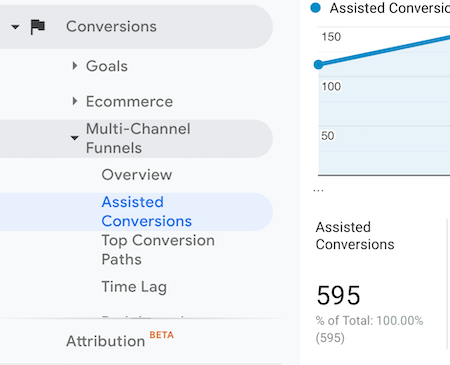
Attribution 360
Something new is coming to the Google Analytics interface. On the left-hand side toward the bottom, there’s going to be a new button called Attribution with a little Beta tag next to it. That’s Google’s slightly watered-down Attribution 360 product.
Google bought a company called Adometry a number of years ago, and it had a machine learning-based attribution system. At first, Google sold that system as Attribution 360 for a high cost, mostly to major corporations. They’ve since watered it down and now it’s available for everyone to try out. It allows you to build a “data-driven model” using a machine learning algorithm called Shapley Game Theory to try to figure out what channels are getting credit.
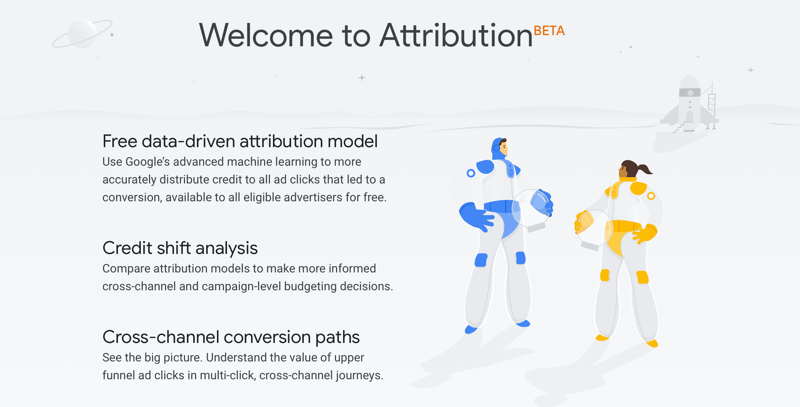
The simplest analogy for how Shapley Game Theory works is that it’s like a poker game. If two people sit down at a poker game, each bets a certain amount and the game may go a certain way. But if a known high-roller joins the game, that person’s behavior will automatically cause each of those players to bet more than they would have when it was a two-person game.
As more people sit down at that poker table, not only does each person change their behavior but the table as a whole changes behavior. With this Attribution product, Google Analytics effectively does the same thing. If Facebook sits at the table, and email sits at the table, and Twitter sits at the table, and YouTube sits at the table, is the conversion more likely to happen when Twitter sits at the table or not? Is the conversion more likely to happen when YouTube sits down at the table or not?
By gathering this data, it helps assign a better understanding of the importance of each channel, not only by itself, but also in relation to other channels. This offers guidance on which channels deserve more or fewer resources.
Some tools will essentially build a custom machine learning model for behavioral attribution. One of the tools Christopher recommends—with the disclosure that his company is an IBM business partner—is called IBM Watson Studio Auto AI. This system can go through huge quantities of data and analyze every possible combination of variables, come up with a model, and deliver what’s called “predictor importance”—how important are the different variables, in combination or alone, toward that outcome?
The system looks for the correlation among all variables and then it can predict the likelihood of what will result in a better outcome than something else, either by itself or in combination.
Attribution Windows
How large your attribution windows should be depends on a few factors. Ideally, if you can break your audience down to that granular level, you should apply different attribution windows per audience segment. You can do this in Google Analytics if you can segment your audience with user ID. If not, just find the longest reasonable conversion window, double it, and that’s your attribution window.
You should probably double what you think is the typical window, just so Google Analytics is properly tracking things. It should be twice what your upper-end sales cycle is so you’re catching the anomalies and outliers on the upper end. If someone converts in 7 days and your attribution window is 30 days, you’ve caught 100% of the conversion. If your attribution window is 7 days and it takes someone 9 days, you’ve lost the 2 days of information.
Talking to the Boss About ROI
Talking to the boss about the ROI of your marketing depends on what the boss cares about. Look at all of the major metrics that a CMO or a VP is being measured by, those top-line numbers. Take all of the metrics you know—ROI, website visitors, growth—and ask yourself how you can draw a solid line between this and your boss’s number. If you can’t make a causal relationship, don’t show it to the boss.
First, you need to understand the goal of the company. If the company’s goal is growth, you have to be able to show growth in audience. Don’t show ROI; show the growth numbers that you’ve put on the board. If the company’s goal is financial efficiency, then that’s when you show ROI.
Sometimes this means you’ll be talking to the CFO, who’s a financial person. If you don’t present ROI in a financially correct manner, you’re going to get your budget cut to zero. When you’re talking money to the money people, you want to show that you’ve made responsible use of their money by focusing on the highest ROI.
When you’re talking to a boss who’s not a CFO and not super-technical, that person might be more subjective in their decision-making. This means that in a lot of cases, they’ll have a very strong opinion that’s not backed up by data. At that point, don’t even talk about channel attribution. Just talk about the results you got.
Christopher recommends focusing on key performance indicators (KPIs). KPIs are the numbers that you either get a bonus for or you get fired for. Everything else is a metric. What is your boss’s KPI? What are they going to get fired for or what are they going to get kudos for? What’s their year-end bonus based on? That tells you what metrics you need to present.
If they’re being held accountable to a P&L, for example, ROI has to be part of your reporting because your ROI impacts their P&L on both the profit and loss sides. If they’re measured on gross revenue and nothing else, don’t show ROI. Show that you boosted growth. And then all you need is the earned side and maybe ROAS.
Key Takeaways From This Episode:
- Find out more about Christopher on his website.
- Follow Christopher on Twitter and LinkedIn.
- Check out Trust Insights.
- Listen to the In-Ear Insights podcast.
- Read AI For Marketers.
- Learn more about Attribution 360.
- Check out Social Media Marketing World 2020.
- Watch exclusive content and original videos from Social Media Examiner on YouTube.
- Watch our weekly Social Media Marketing Talk Show on Fridays at 10 AM Pacific on Crowdcast.
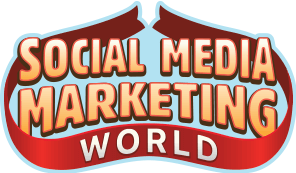
Get Expert Social Media Marketing Training!
Want to keep ahead of your competitors? Need to master a social platform? Discover how to improve your social media marketing at Social Media Marketing World 2020, brought to you by your friends at Social Media Examiner. You’ll rub shoulders with the biggest names and brands in social media, soak up countless tips and new strategies, and enjoy extensive networking opportunities . Don’t miss the industry’s largest conference. Get in early for big discounts.
Sale ends Friday, January 24th, 2020.
What do you think? What are your thoughts on measuring the ROI of your social media marketing? Please share your comments below.

